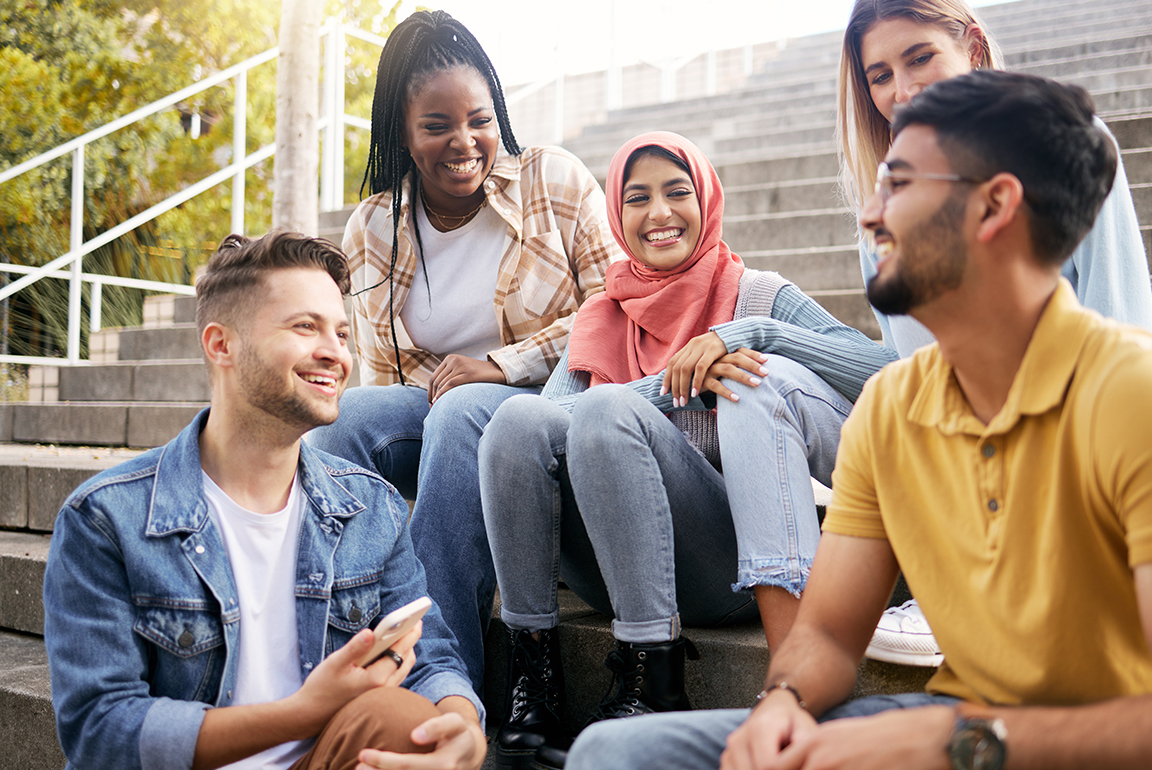Budget tips and tools for college and university students
There’s one subject many Canadian college and university attendees need to brush up on: how to budget as a student.

In a 2023 Ipsos survey of 1,000 Canadian post-secondary students:
- 88% admitted they still have a lot to learn about managing finances
- 54% said they’re much better at spending than saving
Financial management can be challenging for post-secondary students because the inability to work full-time hampers their earning power. In addition, 45% of students in the Ipsos poll expected to graduate with up to $20,000 in debt, which could include student loans, lines of credit or credit card debt. While the trade-off to earn a degree that increases earning power is worth it for many students, that amount might be reduced with better money management.
Here’s how to budget as a student and get a head start on planning for your financial future once classes are finally dismissed.
Budgeting for students
Creating a college or university student budget provides a clearer picture of your financial situation. You can use that overview to set financial goals and track and allocate money strategically to work toward those goals.

Most budgets feature a set of rules or steps that simplify or automate money management and make it a routine habit. Here are a few budgeting methods students can choose from:
50/30/20 budget
Start by calculating your net income (after taxes and deductions like EI and CPP) and allocating it as follows:
- 50% to needs
- 30% to wants
- 20% to savings and extra debt payment
Needs include tuition, rent, campus residence fees, groceries or campus meal plans, academic books, medication, transportation, utilities and cell phone service. Don’t forget to include monthly minimum debt payments on credit cards, loans and lines of credit.
Wants are discretionary expenses outside basic survival: entertainment, shopping, trips, takeout and restaurant meals, TV and music streaming subscriptions, hobbies and gifts.
Savings are funds added to a savings account for an emergency fund, future home down payment or investments (RESP, RRSP, TFSA). This category also includes top-up debt repayments beyond the required monthly minimum.
Pros – boils money management down to simple, consistent habits; forces the student to curb unnecessary spending and put savings aside; addresses both current financial obligations and future financial planning
Cons – tougher to stick to if you have high debt or you aren’t paid regularly
Zero-based budget
Calculate all your monthly income and allocate every single dollar to specific categories so no money is left over. Your income minus all your projected expenses should equal zero.
Start with necessities like shelter, food, tuition, transportation and minimum required debt payments.
Then allocate funds to savings, investments, extra debt repayment and emergency funds.
Finally, allocate the remaining funds to discretionary stuff like entertainment and eating out. Tweak everything until all combined allocations equal your net income exactly.
Pros – a budget with zero wiggle room discourages overspending; it’s easy to immediately spot when you’ve overspent in a category
Cons – some people may find tracking multiple expense categories time-consuming
Pay yourself first
Instead of budgeting to pay your necessities first, this method flips things around to prioritize saving money first. You still have to determine your total monthly net income and most pressing monthly financial expenses like food, shelter and minimum debt repayments. After that, calculate how much you can divert into savings every month (experts typically suggest 10 to 20 percent).

On or around the day you get paid or receive other income like a student loan, set up automated withdrawals or transfers to move that money into a savings account or investment vehicle so it can’t be spent. Those savings can be used for an emergency fund, investments, retirement savings or a future home down payment. Any money left over is for discretionary spending. Nice!
Pros – automated withdrawals or transfers ensure money goes toward savings or investments no matter what; ensuring you have an emergency fund for unexpected expenses and future tuition
Cons – not ideal for students with high-interest debt repayments (they may want to prioritize paying down debt vs saving); tough to access money in investments if it’s needed quickly for something important
No-budget budget
This one is the no-fuss option for managing your money during university and college.
Start by calculating your monthly net income and your monthly ‘necessity’ expenses.
After you subtract those expenses from net income, use the remaining money as you wish: discretionary spending, savings, investments or extra debt repayment.
This budget is even more low maintenance if you set up automated deposits on the income side and automatic bill payments and withdrawals on the expenses side.
Pros – no need to track spending in multiple separate categories; no need to closely monitor spending once money is allocated to cover all necessities like bills
Cons – not breaking expenses into separate categories could lead to overspending; this budget doesn’t prioritize savings, investment, future financial planning or quick debt repayment
Managing your money during university and college
Sticking to a budget is challenging when you’re busy with classes, assignments and studying for exams. These tips might make it easier:

- Simplify by automating things like deposits, bill payments, withdrawals and transfers
- Create a budget based on past bank statements to see what you actually spend
- Put student loans in a separate account to ensure your money lasts the entire academic term
- Switch to a student, no-fee or low-interest credit card and pay off the balance in full each month
- Watch little expenditures that add up quickly (fast food, daily coffees, ride-sharing and food delivery services)
- Be brutally honest with yourself about pricey ‘wants’ that really aren’t ‘needs’
- Look for student discounts off campus as well as at school
- Ask your school’s financial aid office about awards, bursaries, grants and scholarships
- Consider living with your parents or seeking part-time, seasonal or gig work
Budgeting apps and calculators

Apps and budget calculators can help you stay within a budget by automating financial calculations, tracking spending, and monitoring progress towards your financial goals. The Credit Counseling Society of Canada offers a free budgeting calculator designed specifically for Canadian post-secondary students.
Many smartphone apps import transactions directly from your bank accounts or credit cards and alert you if you’re in danger of overspending. Some popular phone apps include YNAB (You Need A Budget), Goodbudget, PocketGuard and Monarch.
Getting a student loan? Use ACU’s loans calculator to estimate your monthly payments.
How ACU can help

ACU offers several services and products that simplify budgeting for students, including:
- A Student Digital Chequing Account with no monthly fees, free electronic transactions, and 25 free Interac e-Transfers per month
- A High-Rate Savings Account that gives you the flexibility of a basic savings account, but earns you daily interest on your closing balance, plus no monthly fee and free deposits
- Our Student Line of Credit requires interest-only payments while you’re in school and interest is charged only on funds you actually use
- Our ACU Collabria Centra Visa* Gold Card builds your credit score while earning you reward points
The Collabria Visa Card is issued by Collabria Financial Services Inc. pursuant to a license from Visa. *Trademark of Visa Int., used under license.
School, like life, is ultimately about more than just financial obligations. An overly restrictive budget that saps all joy from the post-secondary experience may increase your net worth, but just isn’t worth it. ACU can help you make a realistic budget that fits your financial situation, goals and lifestyle. Book an appointment with an ACU advisor today.
Up Next
Kilter Brewing Co. serves up craft beer and community connection in St. Boniface
Deep in the heart of St. Boniface, Kilter Brewing Company is a hidden treasure—an oasis for Winnipeggers to escape their day-to-day routines, enjoy craft beer and connect with their community….
How to use a mortgage calculator to budget better
Learn how to use ACU’s mortgage calculator to figure out how much mortgage you can afford, and what budget you should set before you start house hunting. A mortgage lender…
Building resilience through Manitoba’s local food initiative
Photo Credit: St. Norbert’s Farmers Market photo supplied by Direct Farm Manitoba.






